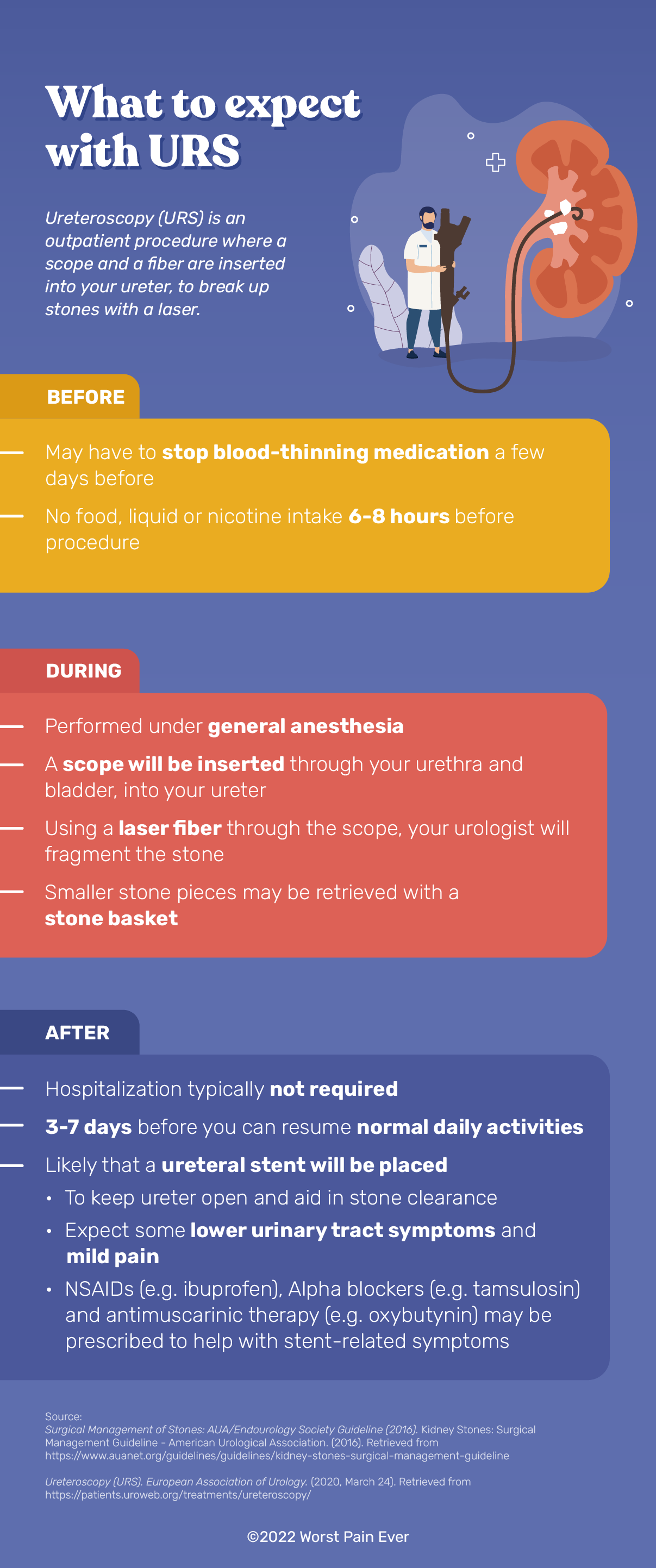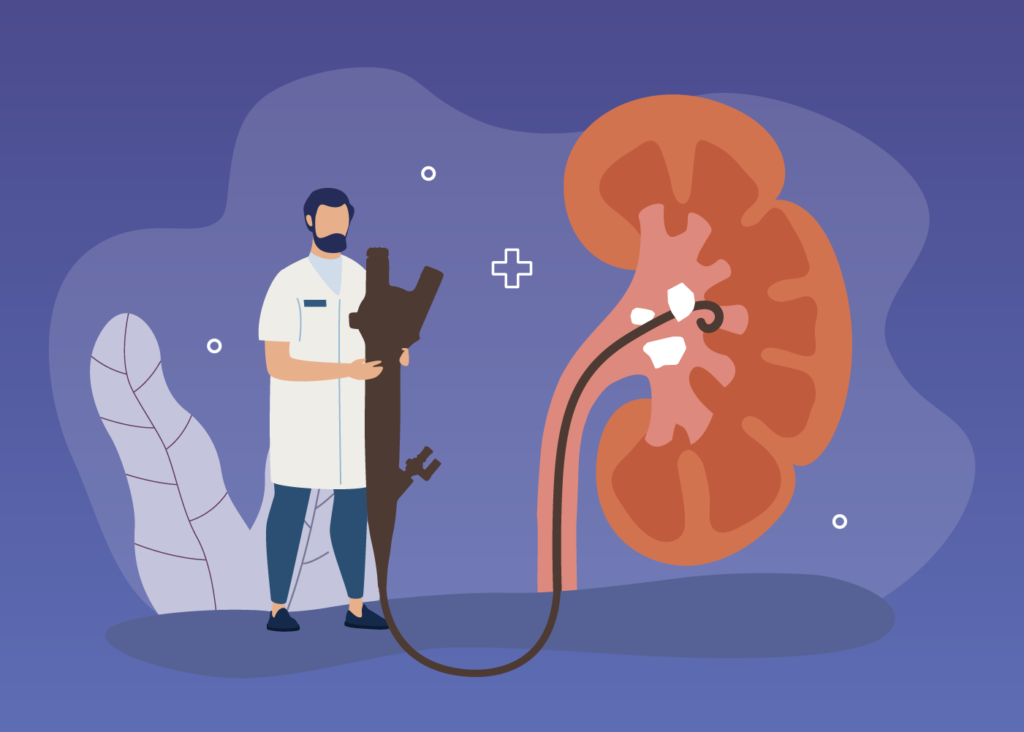Nearly every kidney stone patient has heard of stents and the kidney stone treatment they’re most associated with: ureteroscopy. Having a telescope in your bladder may sound bizarre, but if you have small- to medium-sized stones (<20mm¹), here’s why ureteroscopy (URS) may work for you, and how you can prepare for it.
What is ureteroscopy (URS)?
Ureteroscopy is a kidney stone removal procedure that involves the insertion of a small telescope, called a ureteroscope, through the urethra and bladder, and up the ureter to the point where the stone is located².
This means that unlike extracorporeal shock wave lithotripsy (ESWL), your stone can be seen under direct vision through the ureteroscope. Your urologist will then either break down the stone into smaller fragments with a laser, or remove it with a basket-like device².
Even better? URS does not involve any skin incisions, which is required during percutaneous nephrolithotomy (PCNL).
Fun fact: URS is a good option for people such as airline pilots and pregnant women³, who may not be eligible for other stone treatments like ESWL and PCNL!
What can I do to prepare for my URS appointment?
Tell your urologist if you’re taking any anticoagulants (blood-thinning medication) such as Warfarin. You will be advised to stop taking it a few days before your procedure.
While hospitalization isn’t typically required, you will be under general anesthesia during the procedure. Remember not to eat, drink or smoke at least 6–8 hours before the procedure⁴, and to arrange for a family member or friend to accompany you home afterward.
What happens during the procedure?
Ureteroscopy is typically performed under general anesthesia (which means you will be asleep), and the procedure usually lasts from one to three hours⁴.
A safety wire is inserted through the ureter. Using the wire as a “pathway”, a ureteroscope (a long, thin device with a tiny camera at the end) will be inserted through your urethra and bladder, into your ureter to locate the stone.
For smaller stones, your urologist will retrieve the stone with a small basket-like instrument. Larger stones may need to be broken down with a laser. The fragments will then be passed from your body with your urine.⁵
How should I take care of myself after treatment?
After your surgery, you should rest for 3–7 days before you can resume your daily activities. You can also expect to see some blood in your urine³. Keep drinking water, and this should clear up soon!
To reduce your risk of getting an infection, you may also be put on some antibiotic medication. During your recovery period, keep a lookout for signs of a post-treatment infection⁵, such as fever, chills and worsening pain.
As your ureter may swell after URS treatment⁴, you may require a stent. A stent is a long, thin tube used that helps keep your ureter open to prevent obstruction and help you pee.
Stents can cause temporary lower urinary tract symptoms (LUTS)⁵, such as bladder irritation and frequent urination, as well as a burning sensation when you urinate. Your urologist may also prescribe you some pain relief medication to relieve this symptoms⁵. But don’t worry – these symptoms should go away entirely once your stent is removed!
Read our tips on managing stent pain here: [link]
Too much information to remember? Save this image on your phone for easy reference!

Sources:
- Kidney Stones. University of Michigan Health | Michigan Medicine. Retrieved 15 September 2022, from https://www.uofmhealth.org/conditions-treatments/adult-urology/kidney-stones#:~:text=Ureteroscopy%20with%20laser%20lithotripsy%20(URS,surgeon%20to%20see%20the%20stone
- Ureteroscopy. John Hopkins Medicine. Retrieved 15 September 2022, from https://www.hopkinsmedicine.org/health/treatment-tests-and-therapies/ureteroscopy
- Ureteroscopy and Laser Lithotripsy. UF Health. Retrieved 15 September 2022, from https://urology.ufl.edu/patient-care/stone-disease/procedures/ureteroscopy-and-laser-lithotripsy/
- Ureteroscopy (URS). EAU Patient Information. Retrieved 15 September 2022, from https://patients.uroweb.org/treatments/ureteroscopy/
- Ureteroscopy. Cleveland Clinic. Retrieved 15 September 2022, from https://my.clevelandclinic.org/health/treatments/16213-ureteroscopy





